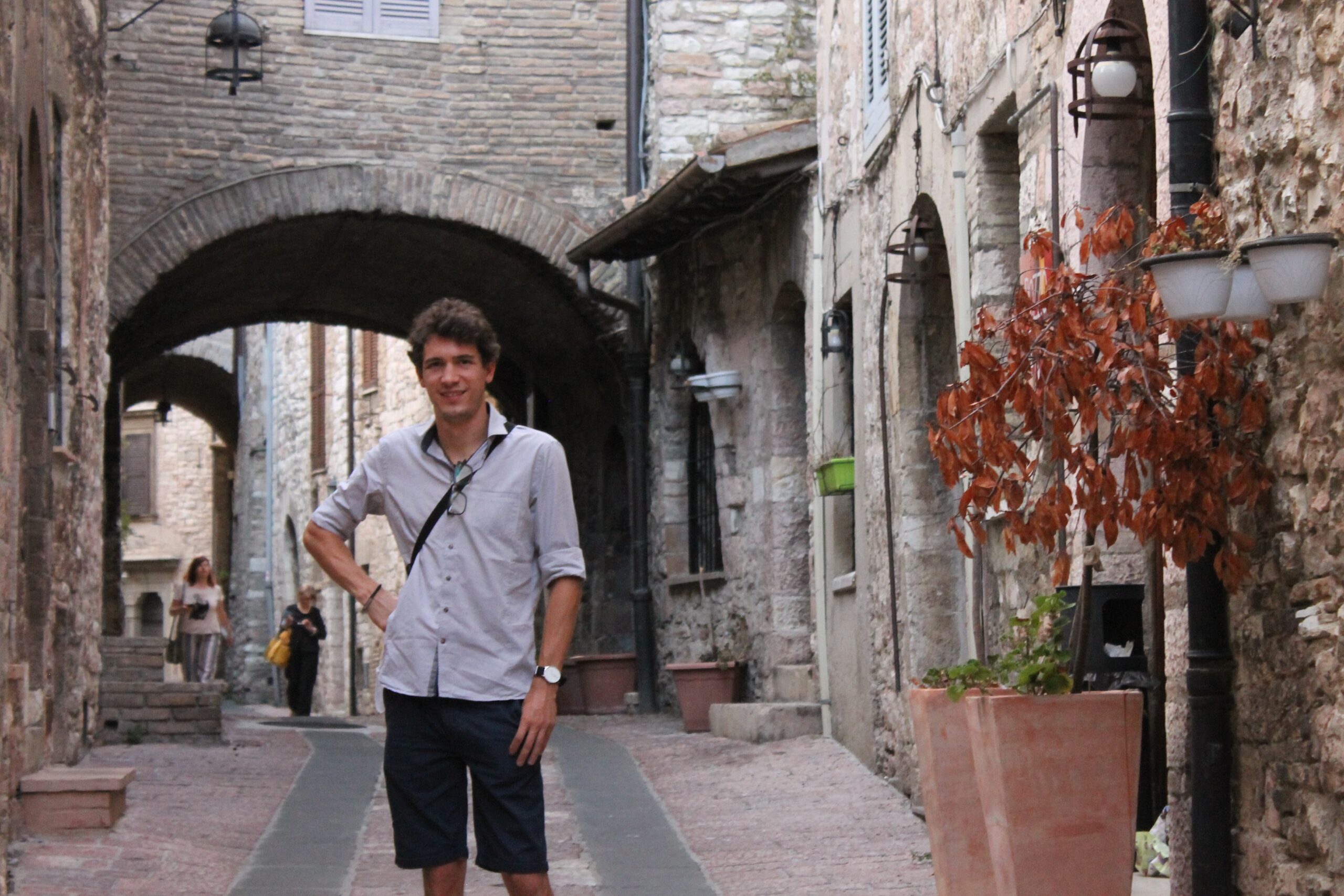Mattia Bellini is a Doctoral Researcher in the research group Narrative, Culture, and Cognition of the University of Tartu, Estonia. His current research focusses on cognition, complexity and narratology in video games. In INDCOR, he is part of the editorial team of Working Group 1 White Paper and the Virtual Networking Team.
Your Working Group, led by Andrew Perkis, did a PechaKucha to kick off your WG1 White Paper. How do you think this activity will help you to design the publication?
The WG1 editorial team, led by Andrew and formed by Shafaq Irshad, Valentina Nisi and myself, decided not to superimpose the structure and content of our White Paper. Rather, we decided to opt for a bottom-up approach: to do so, we needed inputs from WG1 members. PechaKucha is a fun and engaging way to collect ideas and perspectives quickly and in an organize manner.
The PechaKucha event had us think differently about the content of the White Paper. We had 18 wonderful presentations, all bringing interesting and insightful points to the spotlight. From them we abstracted a tentative structure of the White Paper and identified possible section leads. In brief, the PechaKucha session has been of central importance to have a broader view and a more democratic decision regarding the topics that should be touched in the White Paper, and to identify possible authors and contributors, useful for the forthcoming stages. Even more, it has been a fun way to discover new ideas and learn things we haven’t thought before.
How was your personal approach to this brainstorming?
PechaKucha is a brainstorming format that was completely new for me before WG1 event. I participated both in quality of editor and of brainstormer. From an editorial perspective, I was unsure how to collect the ideas and cluster them quickly. Andrew’s lead has been invaluable in many regards, and this is one of them. Eventually, during the event I kept track of the topics touched by each presenter, which has then been useful in identifying sections leaders and potential authors. On the other hand, as a brainstormer I focused on what I felt to be the main points of the INDCOR WG1 White Paper: how to better represent complexity through IDNs, how to make this complexity understandable, and how to make this understanding useful outside of the IDNs themselves. Expressing so many ideas in less than 2 minutes was challenging, but this is exactly the purpose of PechaKuchas, and a huge part of its fun. It is probably also the very reason of the usefulness of this format, as it forces you to focus only on the central ideas and on the points you really think are worth mentioning.
With 18 presentations, do you now have a first vision of how you would like the WG1 White Paper?
Yes, as I mentioned we were able to draft an initial structure of the White Paper right after the event. I was not expecting some of the topics to show up, which is why I said that PechaKucha is useful in bringing up novel ideas. In the end, we noticed that WG1 members feel necessary for the final document to: provide clear definitions of the main terms used, discuss how IDNs can represent complexity and what are the relevant factors impacting this representation, talk about methodologies and best practices to design IDNs representing complexity, discuss the application areas of such IDNs, and envision the future directions of the field. Together with a brief introduction, we see these as our main sections, for now. As for the style of the White Paper, we agreed to work towards a final text not longer than 10 pages. The paper will be presented in a glossy way and in non-academic writing. We want the White Paper to be a document for people outside our community, outside academia in general. Working Group 1 deals with IDN design, and with this White Paper we want to reach designers and practitioners at large, and address their doubts and concerns regarding the representation of complex topics through IDNs. To successfully achieve this, I believe the inputs coming from external stakeholders during the upcoming INDCOR Stakeholders Event will be vital.
How do you see the interrelations of WG1 with the rest of the Working Groups?
All Working Groups are interdependent on each other’s work. As for WG1, some of the interrelations with the other WGs are summarized already in its Mission statement, and are foundational of our efforts. In more particular terms, I think that the conceptualizations of WG2 are useful to talk critically about IDNs and their design practices, to have a clearer understanding of the whole design process and of its goals. The insights of WG3 are important to integrate evaluation frameworks already in the design stage, from which all WGs could benefit. Even more, the results of WG3 evaluations are invaluable in defining best practices for IDN design – for authors to achieve the best possible outcomes. Last but not least, to ensure inclusivity in IDNs and during their authoring phases the visions of WG4 are essential. They help to achieve a broader view of IDNs in their social, cultural, conceptual and material contexts, which is useful to maximize the relevance and impact of an artifact in different environments. In general, I strongly believe that a tight collaboration between Working Groups is not only beneficial but necessary, and through my Virtual Networking Grant I worked to improve group effort and mutual assistance.
